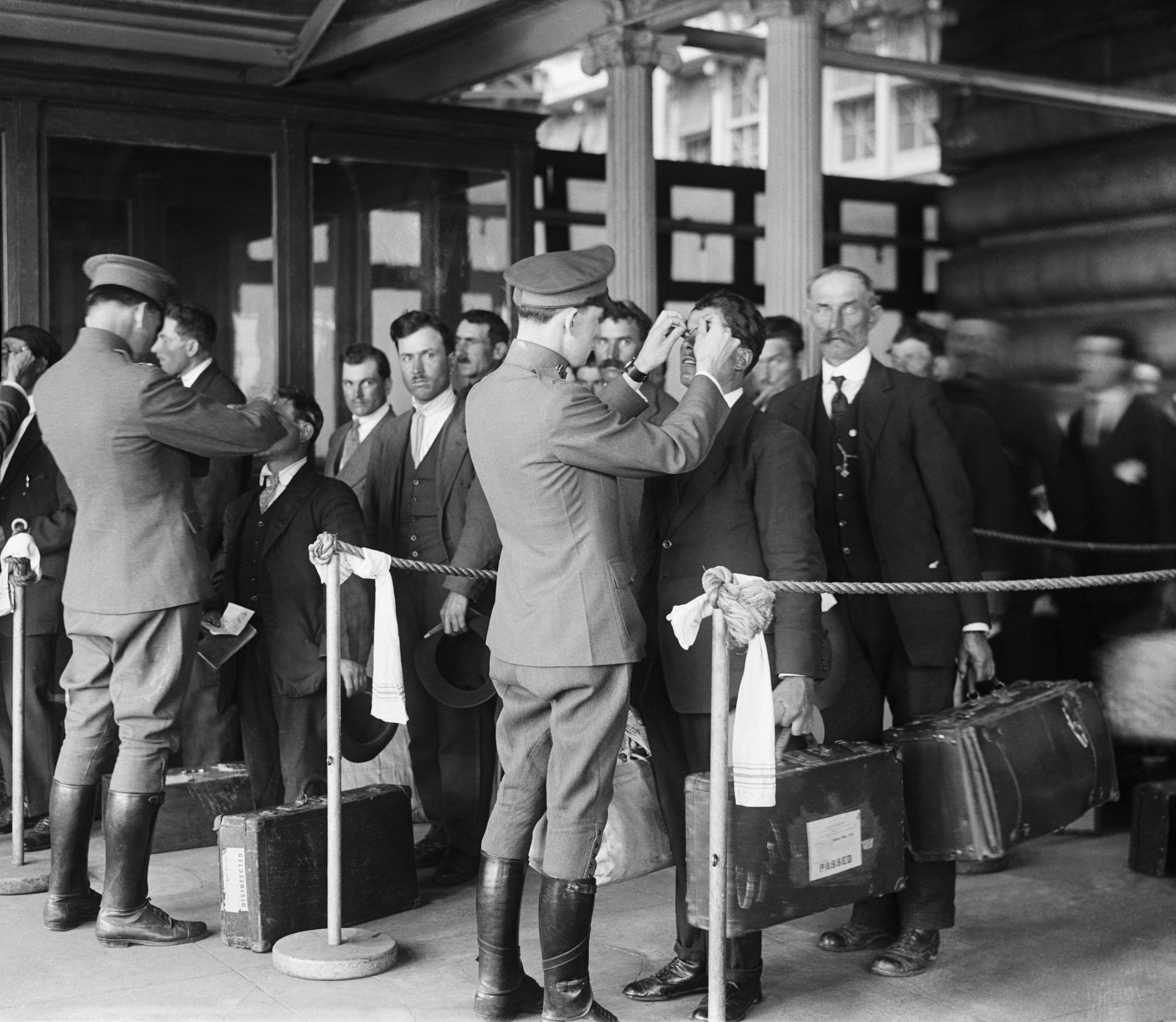KINDRED LINES: Manifests of alien passengers
Published in Features, Issue 4 (July/August 2020), Volume 28BY FIONA FITZSIMONS

Above: Health inspection for new immigrants at Ellis Island, New York, c. 1920.
In the nineteenth century, immigration changed the demographics of the United States and saw the establishment of significant immigrant communities of Irish, Germans, Chinese, Italians and Eastern Europeans. In 1882 the US Congress passed a series of laws to regulate immigration. The Chinese Exclusion Act, which restricted the legal immigration of Chinese migrant workers, was explicitly racist in intent. The Immigration Act set restrictions on categories of immigrants from all other nationalities, including ‘any convict, lunatic, idiot, or any person unable to take care of him or herself without becoming a public charge’. The ‘public charge’ rule was wide and subjective. It was liable to change at any given time, depending on the bias of the official enforcing it. It could be applied to the sick, to anyone judged too old or too young, to women travelling without a male relative, especially if they were pregnant, to any immigrant with a disability, who was deaf, mute or had a visual impairment, and always to the poor.
The 1882 Immigration Act laid the foundation for all subsequent immigration legislation: it appointed government officials with powers to investigate the ships and ports where immigrants arrived; it introduced a head-tax on every non-citizen passenger arriving in the US; and it used the revenues to fund a national immigration administration. The 1891 Immigration Act created a federal Office of Immigration, to co-ordinate enforcement. It extended immigration controls to include the US’s land borders and authorised medical examinations for immigrants. The 1891 Act reiterated the ‘public charge’ rule and added new categories of exclusions, including polygamists, delinquents convicted of crimes of moral turpitude (a crime never actually defined by law) and aliens whose fare was paid in full or part by a third person.
The Act compelled ships’ officers to send a list or manifest of alien passengers to US immigration officers on arrival in port. Of course, since 1819 every ship’s captain was supposed to produce a manifest, but from 1891 manifests were used to inspect the passengers before they could be admitted.
The evidence in the manifests provides good details for family history. Every manifest includes the name of the vessel, the name of the ship’s captain, the ports of embarkation and arrival, and the date of arrival. Manifests also had the following information for each passenger: forename and family name; age; sex; marital status; occupation; nationality; last residence; final destination; whether in the US before and, if so, where and when; whether going to join a relative and, if so, his/her name, address and relationship to the passenger. In 1903 the format was changed to include race; in 1906 it included a personal description and birthplace; and in 1907 it added the name and address of the nearest relative in the immigrant’s home country.
Microfilm copies of the original Passenger and Crew Lists from 1897 to 1982 are part of the Immigration and Naturalization Service records, held in NARA (the US National Archives). The records are arranged by port of arrival and then chronologically. Records from 1982 and later are working files not available for research.
Fiona Fitzsimons is a director of Enneclan, a Trinity campus company, and of findmypast Ireland.
















